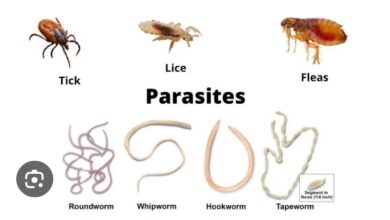Learn More About the Mange Disease in Animals and Control Measures:
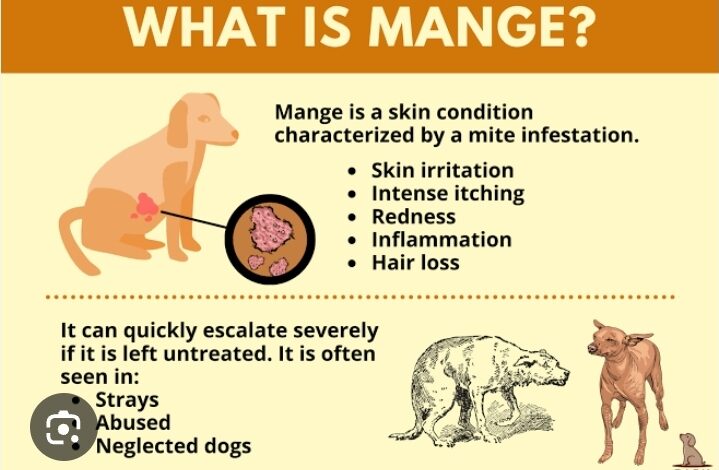
A Step by Step Guide of mange disease in animals, covering its causes, symptoms, diagnosis, treatment, and prevention:
Overview of Mange Disease
Mange is a common skin condition in animals caused by parasitic mites. The disease can affect various species, including domesticated pets (dogs, cats), livestock, and wild animals. This disease leads to skin irritation, hair loss, and other complications, and it can be highly uncomfortable or even life-threatening for animals, especially if left untreated.
There are two primary types of mange: Demodectic and Sarcoptic Mange. Both types involve mites that cause significant skin damage, but they differ in their causative agents, transmission, and severity.
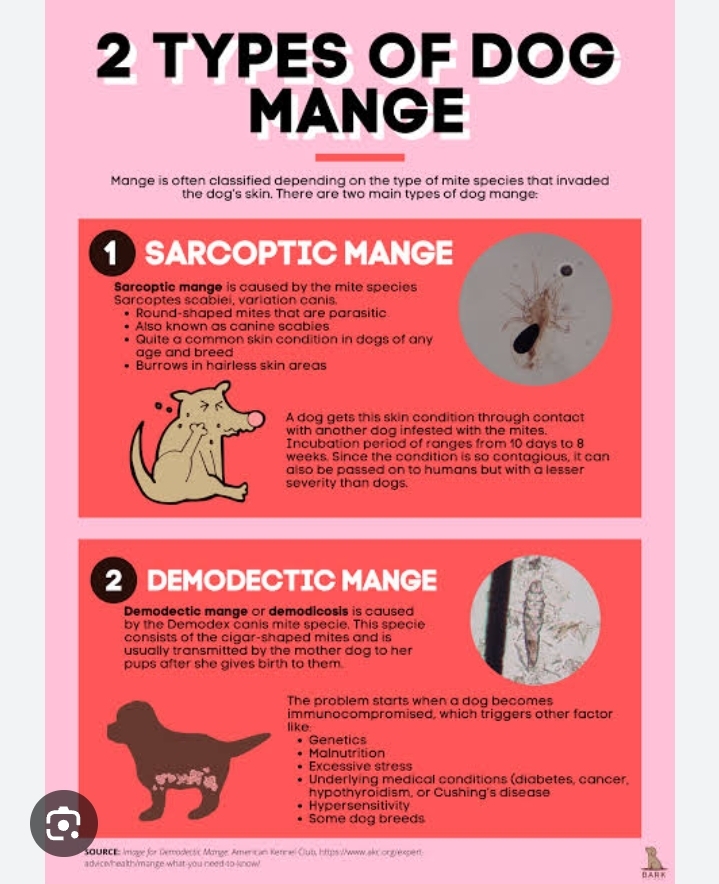
Type of Mange
- Demodectic Mange (Demodicosis)
Causative Agent: Demodex mites
Transmission: Non-contagious (mites are normally present on the skin in small numbers).
Common Hosts: Dogs (particularly puppies), cats, and other mammals.
Overview:
Demodectic mange is caused by Demodex mites, which are microscopic parasites naturally present in the hair follicles and sebaceous glands of many animals. In healthy animals, these mites are kept in check by the immune system. However, when an animal’s immune system is compromised (due to age, stress, illness, or genetics), the mite population can overgrow, causing symptoms of mange. Demodectic mange is typically localized (affecting a small area) or generalized (affecting large areas of the body). In most cases, localized demodicosis resolves on its own, especially in young animals. However, generalized demodicosis requires treatment, as it can lead to severe skin damage, secondary bacterial infections, and other complications. Symptoms:- Hair loss (usually around the eyes, mouth, and limbs).Red, inflamed skin.Crusty or scaly lesions.Skin thickening or hyperpigmentation.Secondary bacterial infections in severe cases.
Mange Risk Factors
- Young puppies (under 1 year old).
- Immunocompromised animals (due to illness or medication).
- Genetic predisposition (some breeds are more susceptible, like Bulldogs, Boxers, and Chihuahuas).
- Sarcoptic Mange (Scabies)
Causative Agent: Sarcoptes scabiei mites
Transmission: Highly contagious (can spread from animal to animal, and potentially from animals to humans).
Common Hosts: Dogs, foxes, cats, and wild animals like wolves and raccoons.
Overview:
Sarcoptic mange is caused by Sarcoptes scabiei, a microscopic mite that burrows into the skin of its host, causing intense itching and irritation. These mites reproduce and live in the outer layers of the skin, leading to inflammation, hair loss, and sometimes scabbing and crusting. Unlike demodectic mange, sarcoptic mange is highly contagious and can spread rapidly through direct contact between animals or through shared environments (kennels, shelters, etc.). Sarcoptic is zoonotic, meaning it can be transmitted from animals to humans, though humans usually experience only mild symptoms (like temporary itching and redness). Symptoms:- Severe itching (pruritus), leading to constant scratching.Hair loss, starting around the face, ears, and legs.Crusty, scaly skin with scabs or sores.Thickened, inflamed, or reddened skin.In severe cases, secondary infections due to open sores.
Mange disease Risk Factors
- Unprotected or outdoor animals with exposure to other infected animals.
- Animals in close quarters (shelters, kennels).
- Animals with weakened immune systems (due to illness or age).
- Sarcoptic mange can spread to wildlife, increasing the potential for cross-species transmission.
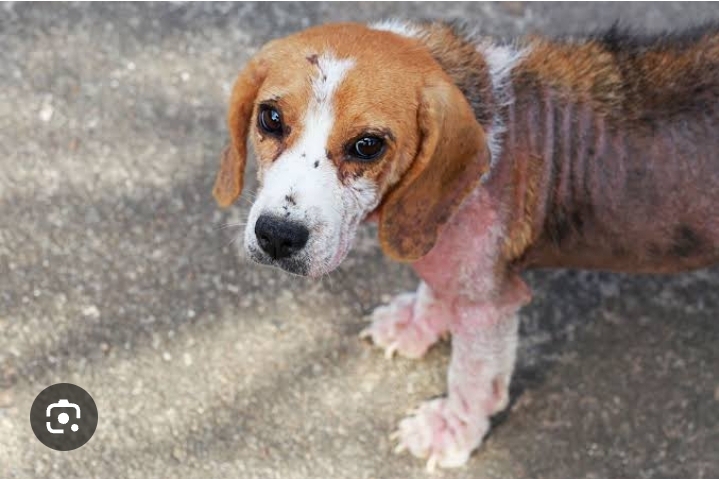
Diagnosis
The diagnosis of the disease generally involves a combination of physical examination and laboratory tests. Here are common methods that we use
- Skin Scrapings: A veterinarian will gently scrape the skin of an affected area to collect samples to examine under a microscope. This helps identify the presence of mites.
- Skin Biopsy: In cases of severe or generalized mange, will be taking a biopsy to examine the deeper layers of skin for signs of mite infestation or secondary infections.
- Fecal Examination: In some cases, fecal samples we take and analyze them to rule out internal parasites that could contribute to skin issues.
- Response to Treatment: Sometimes, we will comfirm the diagnosis by observing the animal’s response to specific treatments, such as mite-killing medications.
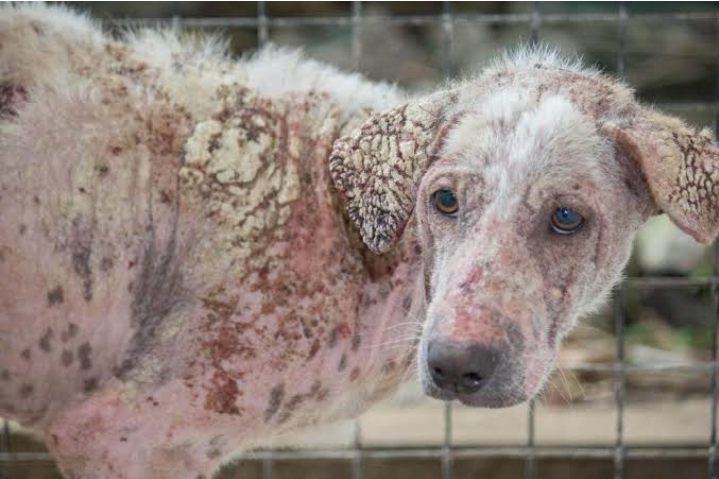
Treatment
Treatment of the disease depends on the type of mange and the severity of the condition. Common treatments include:
- For Demodectic Mange:
- Topical Treatments: These include medicated shampoos and dips that kill the mites and soothe the skin.
- Oral Medications: Ivermectin or milbemycin, is the one we use to kill mites and treat secondary infections.
- Antibiotics: If a secondary bacterial infection is present, antibiotics will prescribe them
- Steroids or Immune Boosters: These may be prescribing it to support the immune system in fighting off the mites.
- Regular Vet Visits: To monitor the condition and ensure the mite population is under control.
- For Sarcoptic Mange:
- Topical Medications: These include medicated shampoos or topical treatments like selamectin, which kill the mites on the skin.
- Oral Medications: Oral ivermectin, selamectin, or milbemycin will for use to treat the infection systemically.
- Insecticidal Dips: Special dips or baths containing insecticides will be recommending them for treating severe cases.
- Antibiotics: If secondary infections are present, antibiotics may be for prescribing
- Environmental Treatment: Since sarcoptic skin disease is highly contagious, thorough cleaning of the animal’s living environment is necessary, including washing bedding, toys, and grooming equipment, and potentially treating other pets in the household.
Prevention of Mange
Preventing this disease involves a combination of proper care, hygiene, and vigilance. Here are some preventive measures:
- Regular Veterinary Care: Annual check-ups can help catch early signs of mange or other health issues before they become serious.
- Proper Hygiene: Regular bathing and grooming, especially for animals with longer fur, can help minimize the risk of mite infestations.
- Limit Exposure to Infected Animals: In areas where mange is prevalent, keeping pets away from wild animals or infected individuals can reduce the risk of transmission.
- Health Maintenance: Keeping your pet’s immune system strong through proper diet, exercise, and avoiding stress is key to preventing demodectic mange.
- Treatment of Infected Animals: Isolate infected animals from others and follow veterinary guidelines to eliminate mites and prevent further spread.
Read More About: ANIMAL’S VACCINATION
Conclusion
This skin condition disease is a significant health concern for animals, but with prompt diagnosis and appropriate treatment, most cases we manage them successfully. Pet owners should be aware of the symptoms and seek veterinary care as soon as they notice signs of skin irritation, itching, or hair loss. Early intervention not only improves the comfort and health of the animal but also helps prevent the spread of mange, especially in cases of the contagious sarcoptic type.
if you want to Aplly for Any Learnerships: Check Here


